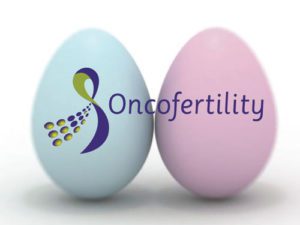More than 70,000 reproductive-age women are diagnosed with cancer each year. Due to the increasing age at which women have their first child, many are not likely to have started their families at the time of diagnosis. Fertility preservation is essential to think about so that women can have a chance at having children after cancer treatment.
Although there are many modifications that physicians can make to treatment protocols, some of the treatments like chemotherapy and radiation can still negatively impact a woman’s fertility. It is important to think about fertility preservation options that can extend a woman’s fertility and increase the chances that she may become a parent one day despite the treatments she may be facing.
- Embryo Freezing
- Egg Freezing
- Sperm Freezing
- Ovarian Tissue Freezing (experimental)
For teenage and adult males, sperm freezing is an uncomplicated process that can be performed soon after a cancer diagnosis has been made. Ejaculated sperm is collected through masturbation and it can be frozen indefinitely. Many healthy babies are born after decades of frozen sperm storage.
For female patients, several factors must be considered including: age of the female; baseline ovarian reserve; type of cancer and treatment plan; presence of a partner or sperm source; interest in using donor sperm if no male partner; available time before cancer treatment; and, health of the patient.
Although we cannot reliably predict who will have their fertility affected by cancer treatment, every patient should be informed of the different fertility preservation options. Fertility preservation techniques do not usually require a significant delay in cancer treatment, especially when the oncologist and infertility specialist coordinate care at initial cancer diagnosis.
What are the options before cancer therapy?
Embryo Banking– Embryo banking is the freezing of one or more embryos until a woman is ready to become pregnant. This is the most established form of fertility preservation and is an excellent option for women who have a male partner or are interested in using donor sperm. The process takes approximately 10-12 days, and usually requires hormone stimulation to mature several eggs at one time. There are specific ovarian stimulation protocols that may be considered to reduce exposure to estrogen, such as with the use of medications like Letrozole. Mature eggs are fertilized in vitro (outside the body) to form embryos and then they are frozen for future use.
Egg Banking– Egg banking is the freezing of one or more eggs until a woman is ready to attempt pregnancy. A woman without a partner or sperm source, or a woman who simply wants to preserve her reproductive autonomy, may choose this option. The egg freezing process takes approximately 10-12 days, and usually requires hormonal stimulation to mature several eggs at once.
In 2012, the American Society for Reproductive Medicine (ASRM), lifted the experimental label for egg freezing due to reassuring accumulating data as well as advances in techniques. Multiple studies have confirmed that frozen eggs result in successful pregnancies and healthy babies at a rate comparable to that produced by IVF using fresh eggs. In addition, the development of the vitrification (flash freeze process) had been shown to have increasing success. Because of these developments, egg freezing is now offered as standard of care to women considering fertility preservation.
The most common time for a woman diagnosed with breast cancer to undergo hormonal stimulation is between surgery and the subsequent planned chemotherapy or radiation. This usually gives more than enough time for the reproductive endocrinologist to perform IVF for embryo banking or egg banking without delaying cancer treatment.
Fertility Sparing Surgery-For patients who will receive abdominal or pelvic irradiation, it may be possible to perform a surgery in which the ovaries are moved out of the radiation field. For patients with early stage gynecologic cancers, it may be possible to conserve reproductive organs at the time of cancer surgery.
What are the options after cancer therapy?
After cancer therapy, survivors who desire to have children may wish to have a consultation with a reproductive endocrinology and infertility specialist to assess their fertility potential.
For women and men who are subfertile after cancer treatment, assisted reproductive technologies may be appropriate to help cancer survivors achieve pregnancy.
For cancer survivors who become menopausal after cancer treatment, egg donation is a highly effective option for achieving a pregnancy.
Because some women are unable to carry a pregnancy after cancer therapy, having a gestational surrogate carry their pregnancy may be an option for these cancer survivors.
Safety of pregnancy after cancer
Research on the safety of pregnancy for the cancer survivor and their subsequent children is very reassuring. Large studies have found that babies born from egg freezing are not at a greater risk for congenital anomalies when compared to the general population. Also, there are no greater risks to the women themselves or to their subsequent children after cancer treatment.
Ovarian tissue freezing– Ovarian tissue freezing is an experimental procedure in which a portion of the outer layer of the ovary, which contains a large number of immature eggs, is removed and made available for future use. The hope is that eggs may be obtained from that tissue that can later be fertilized. Another strategy is to take the resected tissue and transplant it back into the patient after cancer treatment has been completed. This allows a portion of the ovary to be protected from chemotherapy or radiation which can potentially regain function after transplantation. There have been approximately two dozen human births worldwide from these techniques, and may be an option for women who cannot be exposed to hormonal therapy or for those who need to undergo chemotherapy or radiation immediately. And this is the only option for girls who have not experienced puberty. However, these techniques are still being investigated and are not yet standard of care.
Planning for the future
More than ever, cancer patients are surviving their disease and can look forward to the future. The ability to have children and build a family is important to cancer survivors.
The oncofertility program at HRC Fertility aims to explore and preserve the reproductive future of patients facing fertility-threatening cancer treatments. Options are available for both cancer patients beginning treatment and those who have already started or completed treatment.
In the next blog, we’ll discuss obstacles for accessing fertility preservation, pregnancy after cancer and preventing the transmission of inheritable cancers.


